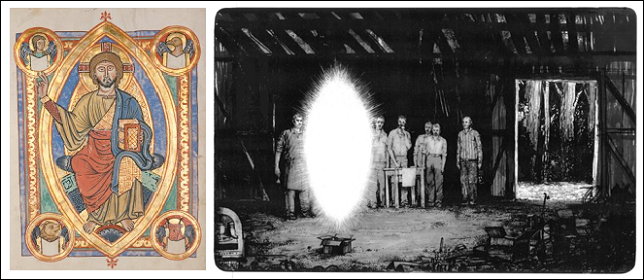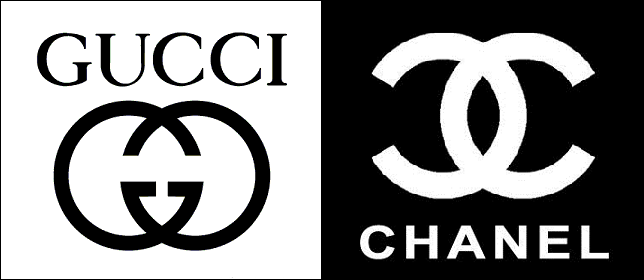Form is insight: the vesica piscis
[ by Charles Cameron — here’s another post in my importance of form in intelligence series ]
.
Form is pattern, and pattern recognition is insight.
A while back, I started a series of posts [1, 2, 3, 4 and 5] in which I suggested that form is, from an intelligence point of view (and however you may parse “intelligence”) as important to humans as content. I’ll be saying more about this today, but wanted to complete this old and never quite completed post in that series right away, in response to a comment Grurray made today regarding Venn diagrams and the vesica piscis.
.
**
If you’ve seen a Venn diagram, you’ve seen overlap. And the simplest form of overlap — between two classes, ideas, or whatever — is the one that’s Venn diagrammed (below, left) as the overlapping of two equal circles — known to artists as the vesica piscis or eye of the fish.
MasterCard uses it for its logo (right) —
— as do Gucci and Chanel:
**
But let’s go back to that first pair of images:
Long before commerce took note of it, the vesica was a sacred image — back in the days when geometry, like nature herself, was sacred.
Like the illuminist of the Codex Bruchsal (ca 1220) with his Christ Pantocrator (above, left), Jan Valentine Saether makes sacred use of the vesica in his book The Viloshin Letters, which I hope to see published shortly — the exquisite suite of prints that accompany the text have already been exhibited to acclaim.
In his text accompanying this particular plate, he writes:
I was not sure. But a new wonder has been moving towards us. That which is… has a new presence. Entering here from elsewhere, the holy spirit manifested again in the vernacular last Wednesday, September 16th.
We were standing around, being together in our own fashion, when suddenly through our common imagination, right there on the floor in the old barn, the donna and the madonna, the loose one and the holy one, merged and became visible.
**
It seems to me there is more to the glory of God than there is to the glory of handbags and perfumes — but your mileage may vary, credit cards are handy little items, and then again, it’s all part of the glory in my opinion.
A neat koan, that.






June 7th, 2013 at 11:25 pm
The link – a comment Grurray made today – awoke a WordPress daemon demanding my identity before it would allow my viewing, and I declined, but thought I’d mention it because it’s probably a small formatting glitch ..
June 8th, 2013 at 1:39 am
Should be fixed now — thanks!